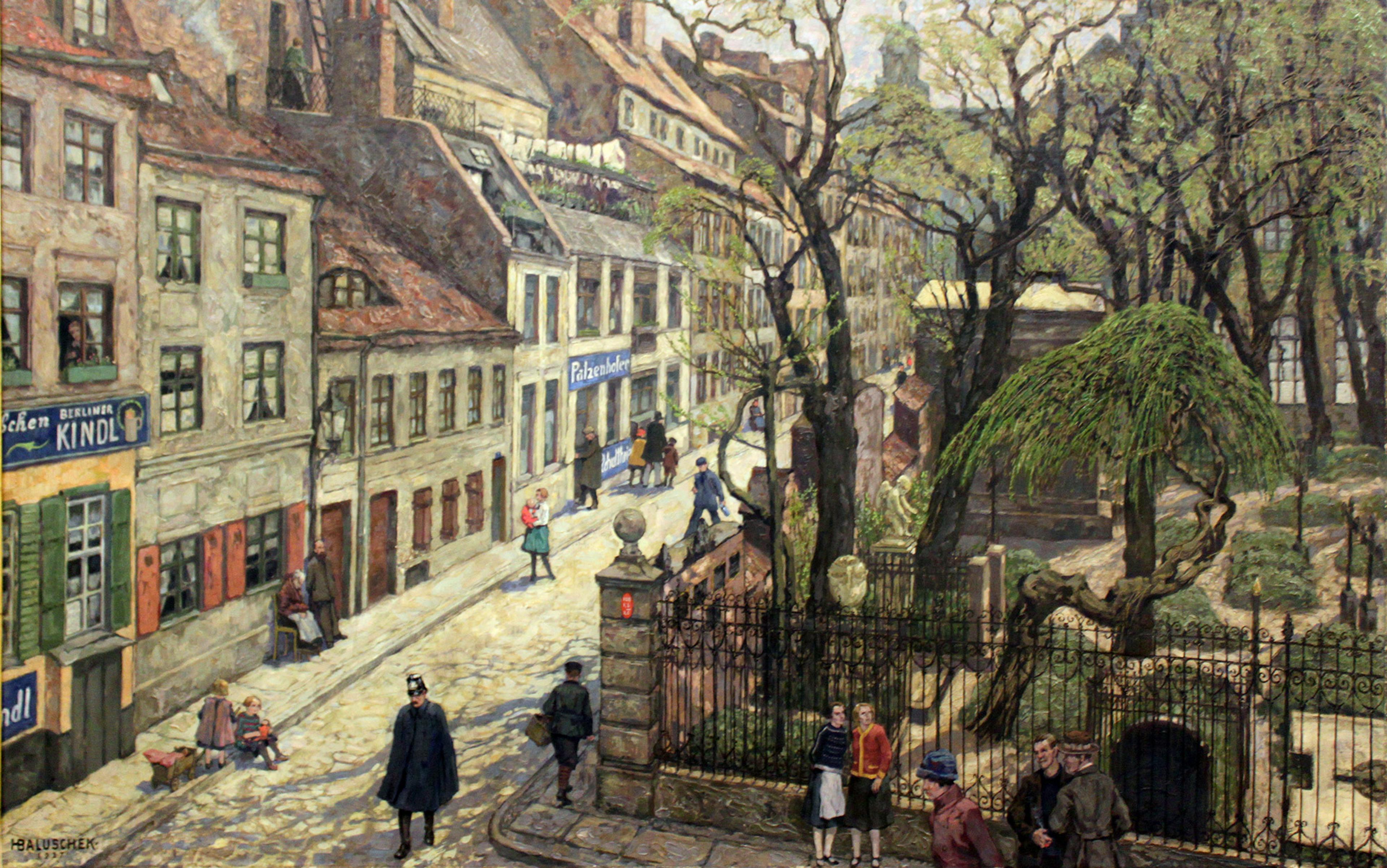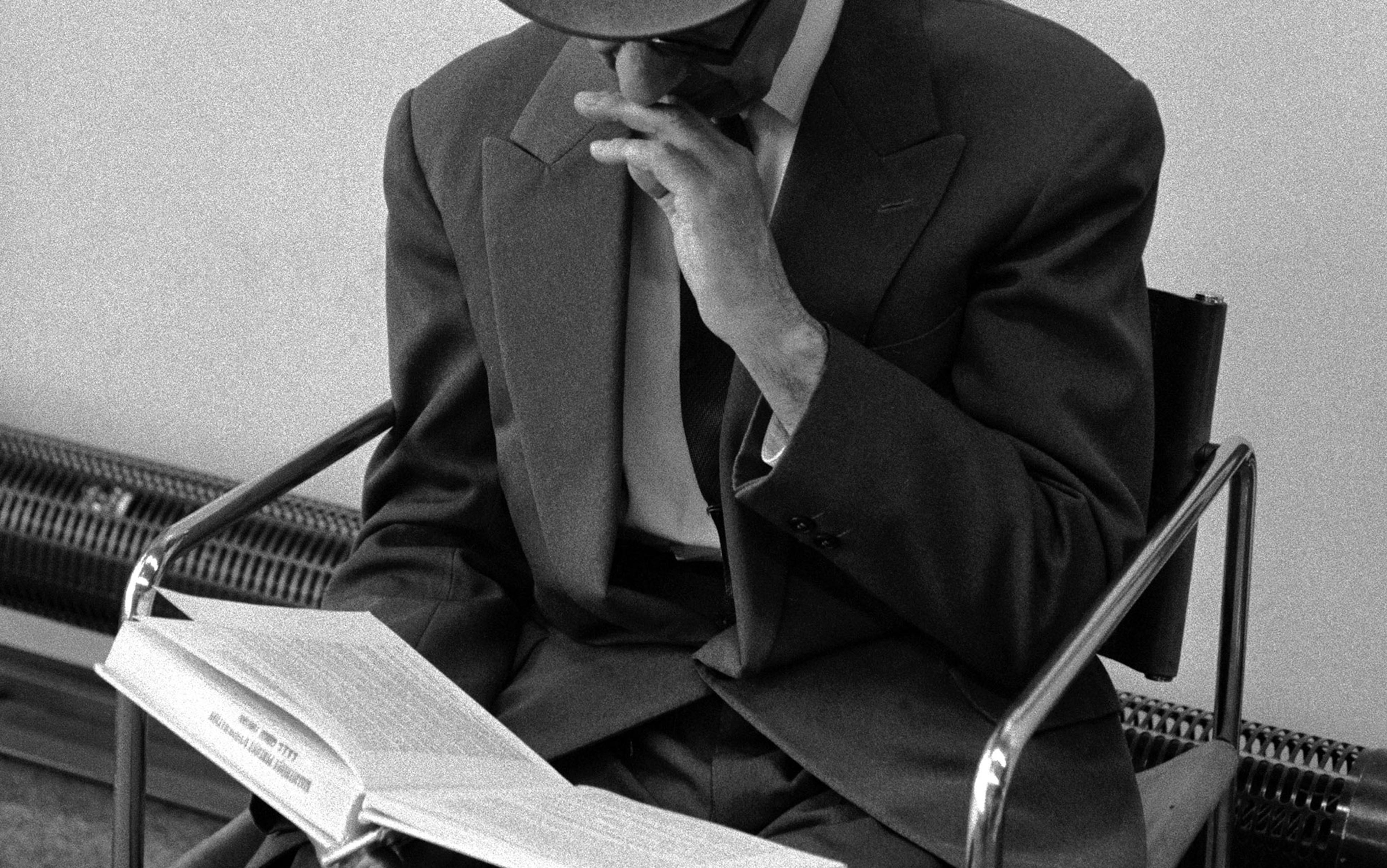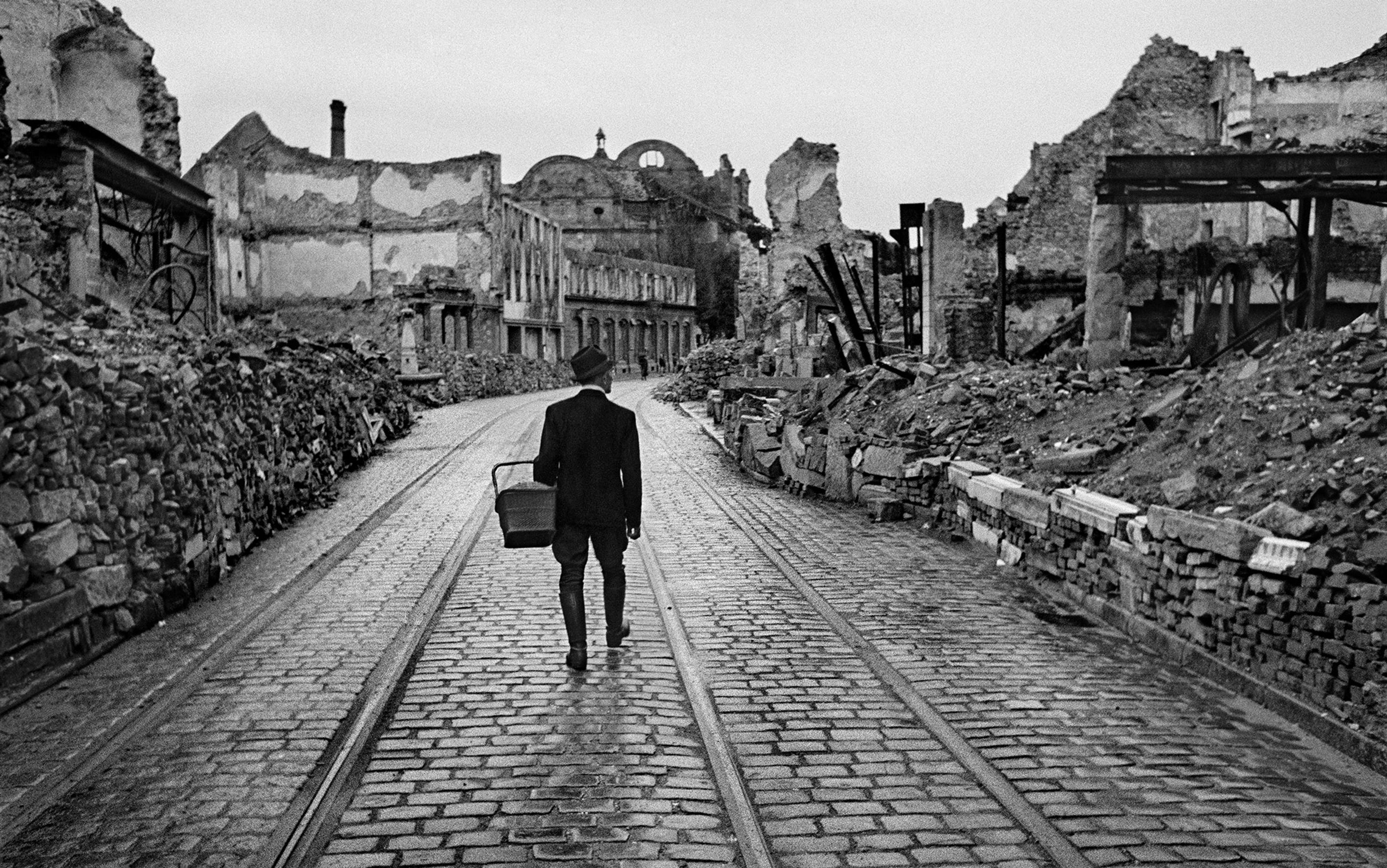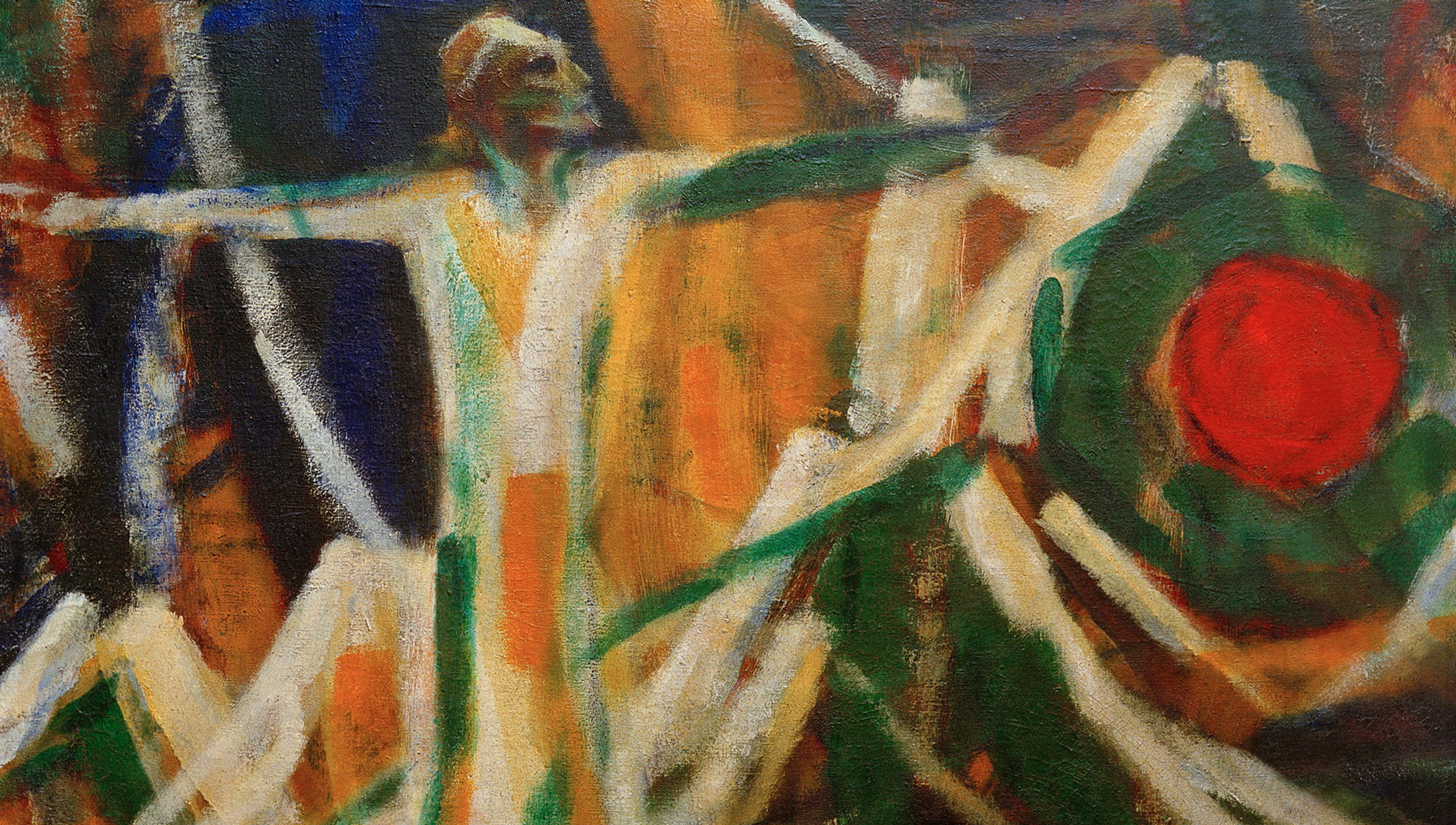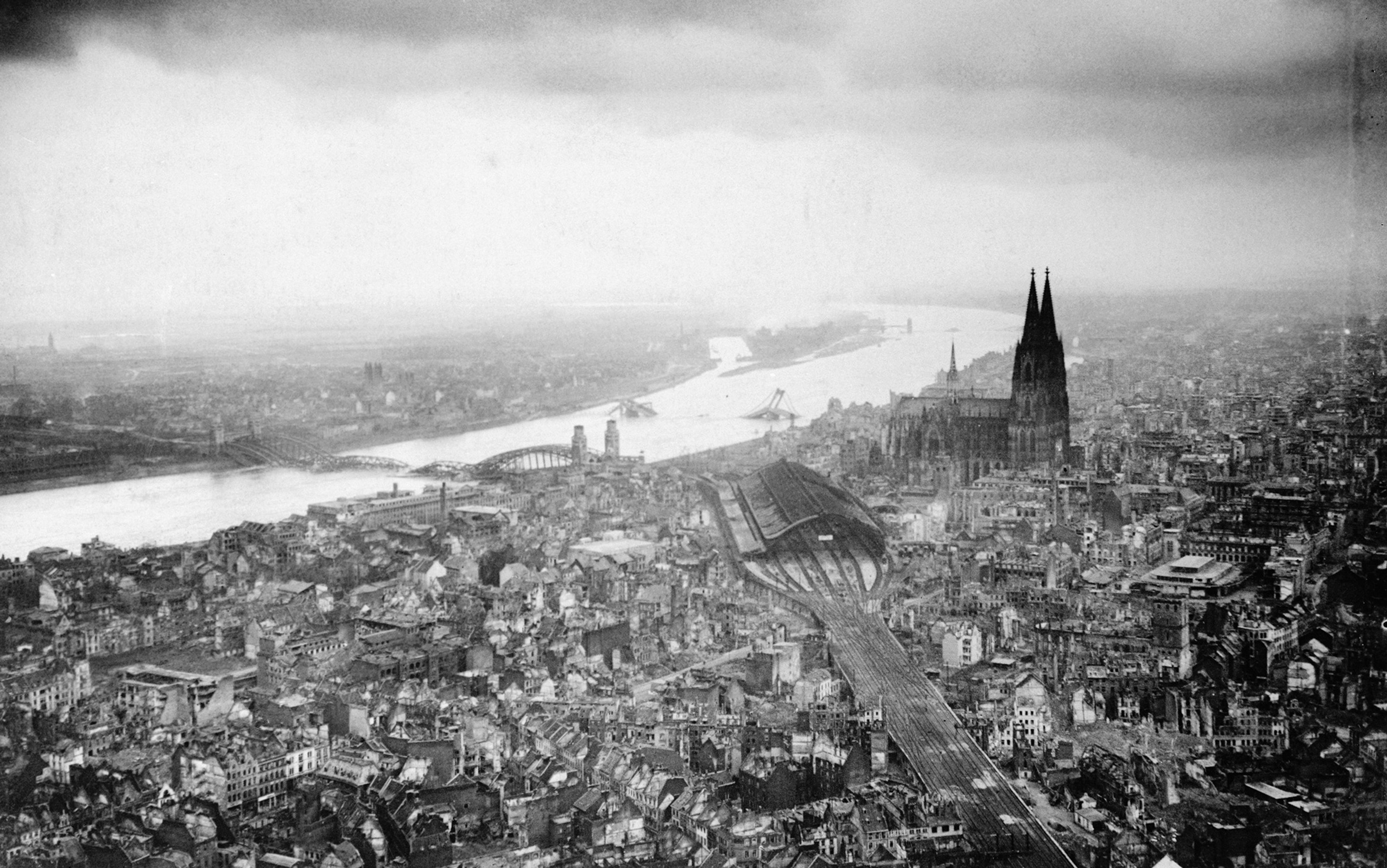Georg Simmel was born in the heart of Berlin in 1858. That city epitomised the tensions of Germany’s special path to modernity. Rapid urbanisation and financial speculation propelled Berlin to the world stage. An avant-garde cultural elite flourished uneasily alongside central Europe’s aristocracy while a young proletariat fought the state and the bourgeoisie for rights, political and economic. A proliferation of modern technologies generated power and wealth while eroding the landed Prussian Junker nobility, the foundation of Bismarck’s united German Reich. The Hohenzollern dynasty – one of the oldest in Europe – reigned over a volatile empire, intoxicated by the most modern ideas.
The University of Berlin, which gave Simmel his education, was saturated with neo-Kantianism’s critical, historicist spirit. Yet Simmel found it hard to conform to Germany’s staid academic culture. His first dissertation, on ethnomusicology, was failed as too ‘speculative, aphoristic and stylistically careless’. Although he earned his doctorate in 1881 and his habilitation in 1885, his examiners perhaps had a point: his published articles often omitted references and refused scholarly narrowness. As Gustav von Schmoller, one of Simmel’s contemporaries, wrote of his style: ‘he prefers to provide more caviar than black bread, to illuminate with a firework than a study lamp.’
Not at home in the treatise, taxonomy or monograph, Simmel was foremost an essayist. As his fellow German scholar Theodor Adorno wrote of the essay form, thinking of Simmel, it ‘does not let its domain be prescribed for it … The essay does not play by the rules of organised science and theory …’ Instead of fashioning a comprehensive system, essays lightly gesture towards hidden depths and the connectedness of phenomena, often to greater effect. The impression is of a temporarily illuminated whole that fades rapidly, leaving one with the sense that there is more to be discovered, provided another flash of brilliance. Take the opening lines of Simmel’s essay ‘The Metropolis and Mental Life’ (1903):
The deepest problems of modern life derive from the claim of the individual to preserve the autonomy and individuality of his existence in the face of overwhelming social forces, of historical heritage, of external culture, and of the technique of life.
Simmel effortlessly establishes a rich framework of enquiry. But more than this, we don’t just hear the individual in general, but also this individual, who struggled to find a place in a hostile world. Yet Simmel also loved his world. ‘Perhaps I could have achieved something that was also valuable in another city,’ he reflected later, ‘but this specific achievement, that I have in fact brought to fruition in these decades, is undoubtedly bound up with the Berlin milieu.’ This is why Berlin found its self-consciousness in his essays.
The analysis in ‘The Metropolis and Mental Life’ centres on two interlocking social forms: money and the city. As they become dominant, they erode natural rhythms of production and traditional social bonds. This is liberating: cash doesn’t care about birthright, it is ‘concerned only with what is common to all: it asks for the exchange value’. Yet, there is a hidden cost: money reduces what is uniquely valuable to a number, a price. In the right ratio, fine hand-crafted goods are equal to mass-produced junk. This devalues commodities – nothing that can be bought is unique – while simultaneously accelerating the search for whatever is truly unique and incomparably valuable.
The city accelerates the calculable logic of money, encroaching even on our experience of time. As Simmel wrote:
If all clocks and watches in Berlin would suddenly go wrong in different ways, even if only by one hour, all economic life and communication of the city would be disrupted for a long time.
Time is no longer governed by the seasons or celestial bodies, but is abstracted and measured. The city also compresses space, social and geographical. Diverse classes, strata, cultures, linguistic groups and vocations are brought into close proximity. This is why, as Simmel observed, the German philosopher Friedrich Nietzsche preached against the city bitterly: it threatened to subsume his noble individualism into a mass.
While Simmel was a deep reader of Nietzsche and shared his romantic attraction to ‘an endless succession of contrasts’, he took an urbane distance from the latter’s aristocratic radicalism. Instead of seeking extremes in the mountains of Sils Maria, Simmel found them in the metropolitan crowd, where one can feel the uniquely modern loneliness of passing a thousand faces without recognising a friend. Nietzsche’s peaks and valleys produced noble heights and abject depths. Simmel’s metropolis instead cultivated blasé citizens who, afraid of being subsumed, distinguish themselves with externally cool indifference.
The salon he cultivated around his house was as important to his work as the library
Disillusioned by advertising and overstimulation, Simmel suggested that blasé individuals search for quality in their last refuge – personality:
Man is tempted to adopt the most tendentious peculiarities, that is, the specifically metropolitan extravagances of mannerism, caprice, preciousness … the meaning of these extravagances … [lies] in its form of ‘being different’, of standing out in a striking manner and thereby attracting attention.
Simmel knew such characters well because they regularly came over for dinner. The salon he cultivated with his wife, Gertrud, around his house was as important to his work as the library. Margaret Susman, a regular guest at the Simmel household, writes:
The weekly jours … were a sociological creation in miniature: that of a sociability whose significance was the culturation of the highest individuals. Here conversation … floated in an atmosphere of intellectuality, affability and tact, detached from the ultimate burden of the personal element … Only exceptional people, distinguished by intellect or even by beauty, took part in these social events.
Simmel’s guests included Stefan George, the symbolist poet, and Lou Andreas-Salomé, psychoanalyst, author and one-time apple of Nietzsche’s eye. In return for their patronage, Simmel held a mirror to this cultural elite. His public lectures were acclaimed, and attracted the best of central Europe’s intelligentsia. For a brief period prior to the First World War, figures as diverse as Leon Trotsky, Siegfried Kracauer, Karl Mannheim, Georg Lukács, Karl Jaspers and Emil Lask bumped knees at Simmel’s lectures.
His international impact was easily equivalent to that of Simmel’s contemporaries, Émile Durkheim and Max Weber, finding an audience in Chicago as early as the 1890s. Nevertheless, he was perpetually denied academic promotion. As his father had died while Simmel was young, he was appointed a guardian who owned a music publishing house and who left Simmel a considerable inheritance, financially securing his intellectual pursuits. From 1885 to 1900, Simmel remained a Privatdozent, a lecturer whose pay is dependent on the ability to attract students. Money doesn’t discriminate and neither did Simmel – so he welcomed women as guests to his lectures, in violation of contemporary conventions. During the 1890s, despite Bismarck-era antisocialist laws, Simmel also associated with socialist circles and even published in their paper, Vorwärts. The fact that he moved in the wrong circles and attracted the wrong students added barriers to academic advancement.
Finally, in 1898 he was promoted to Ausserordentlicher Professor, the uncommon rank of ‘professor without a chair’, paid at half the rate. This also denied Simmel the right to take on doctoral students. Perhaps he imagined that The Philosophy of Money (1900), his magnum opus, would demonstrate once and for all his suitability for a full professorship.
If you look carefully at a 100-mark Reichsbanknote from 1908 – issued one year after the revised edition of The Philosophy of Money was released – it lets slip a lot. One’s eye is first attracted to the ‘100’, then the red serial numbers and the seal of the Reichsbankdirektorium. Between these are signatures, above which hover the date of issue, assurances of authenticity and – of course – an elaborate blackletter typeface once more stating the note’s value. The imagery, very different from Enlightenment motifs found on French or American banknotes, hints at Germany’s romantically inflected nationalism. On the reverse, a feminine personification of Imperial Germany, well-armed but at peace, sits amid symbols of culture, science and industry. Behind her stands an ancient oak, symbolic of Donar (the German equivalent of Thor) and in the distance coal-fuelled battleships pass in procession.

Public domain.
These aesthetics combine the abstract and the concrete: on one pole is a numerical value; on the other, illustrations of a nation’s wealth and virtues; and in between, pointless, quasimagical legal assurances. All this is as it should be. Money is a unique social object, useless by itself but given power by a state bank and backed (in those days) by gold. Money can equate tangible goods as diverse as medicine, industry or even the cultural pleasure (and sub-Dionysian revelry) one might expect for the price of a ticket to Wagner’s Ring Cycle at Bayreuth.
Money is nothing, but it flows everywhere and mediates between everything. In keeping with this mysterious quasitranscendental status, Simmel’s method combined aesthetics and philosophy. The ‘great advantage of art over philosophy’, he explained:
is that it sets itself a single, narrowly defined problem every time: a person, a landscape, a mood. Every extension of one of these to the general, every addition of bold touches of feeling for the world is made to appear as an enrichment, a gift, an undeserved benefit.
Philosophy, for its part, demands that this aesthetic heuristic submit to the ‘infinite reciprocity’ of reason. The result is a philosophy of money that is critical precisely because it’s honest about its subjective, aesthetic foundation and necessary incompleteness.
‘For man, who is always striving, never satisfied, always becoming, love is the true human condition’
The centrepiece of Simmel’s work is a conceptualisation of exchange, an act between two people that produces value, a ‘third term, an ideal concept which enters into the duality but is not exhausted by it’. This irreducibility is why value can, in the form of money, take on a life of its own, which Simmel describes as ‘the reification of exchange among people, the embodiment of pure function’. Of course, no one said exchange would always be fair: as bandits and medical insurance companies know, one will pay any price to live. Nevertheless, as acts of exchange proliferate, currencies and prices rationalise and standardise value.
Money, like Heraclitus’ river, constantly moves while staying the same. Because it has no goal beyond its own circulation, money points towards noneconomic values. Yet, as the market grows, the ‘teleological chain’ of transactions extends, making nonmonetary goals more distant and more valuable. Take love, for instance. As we become more anonymous and distant from one another, love – which wishes to overcome distance between the self and the loved one – flourishes. As Simmel put it: ‘For man, who is always striving, never satisfied, always becoming, love is the true human condition.’ This is also why, as he notes in his essay on prostitution, money can buy sex – but it can’t buy you love.
By reducing time to a measurable quantity – for example, an hourly wage – money creates yearning for quality time. This could be a night out, a holiday, or a duration in which seconds feel like hours, in which time rushes by or in which one simply forgets time. As Simmel argues in his essay ‘The Adventure’, an adventurer is someone who styles his life around qualitative time. It appears that the adventurer is blessed with skill – but he merely aestheticises the blind, indifferent luck that makes such a life possible. So, the adventure always ends with failure or retirement (which amounts to the same thing). Romance, which promises to make quotidian time beautiful, is the adventurer’s genuine escape route.
Simmel didn’t glorify the monetary economy. Not only did he link it with disenchantment, he was aware of its victims: with the extension of the economy, a ‘larger proportion of civilised man remains forever enslaved, in every sense of the word, in the interest in technics’. In such passages, we can see Karl Marx’s influence on Simmel, and Simmel’s on both Lukács and Martin Heidegger. While Simmel avoided the radical politics associated with these two, his character types become more radical. For instance, Simmel speaks of the modern cynic, who is intoxicated by the awareness that money can reduce the highest and the lowest qualities to the same basic form:
The nurseries of cynicism are therefore those places with huge turnovers, exemplified in stock exchange dealings, where money is available in huge quantities and changes owners easily.
Worn-down spiritually, cynics have convinced themselves that only crude consumption and exchange are real.
Every cynic is a spurned lover. On the other hand, the person with a blasé outlook knows it is better to have loved and lost. And the moment that love seems possible again, the blasé are one step away from leaving behind their indifference and becoming the cynic’s opposite: the sanguine enthusiast.
In The Philosophy of Money, Simmel defends absolute relativism. This fit with common neo-Kantian sensibilities that, having been burned by the mid-19th-century collapse of Hegelian absolute idealism, focussed on the validity of limited, particular truths. However, while one swallow might not make for spring, one true statement does presuppose a series of dependent meanings, assumptions and propositions. To vouchsafe this infinite chain of truth once and for all, it would be necessary to know the whole – an object too vast – or to go to the root, to the most fundamental truths from which all others stem, though this risks reductionism. Simmel rejected both strategies.
Instead, he concluded that ‘truth is valid, not in spite of its relativity but precisely on account of it’. Simmel saw that the individual’s quest for truth would inevitably fail, revealing itself to be as perniciously circular as the movement of money. Thus, relativism – a doctrine of constant flux – was to be the only viable absolute. Simmel presented this as liberating: ‘the expropriator will now be expropriated, as Marx says of a process that is similar in form – and nothing remains but the relativistic dissolution of things into relations and processes.’ But there is also an element of tragedy here: to love truth is to love something we feel duty-bound to seek, even though it remains always out of reach. Like Herman Hesse’s protagonist in Steppenwolf (1927), Simmel chased an elusive absolute.
He also continued to apply for a professorship. His application for the second chair of philosophy at Heidelberg University was praised extensively by their philosophy faculty but ultimately rejected on the basis that Simmel’s expertise was confined to sociology, then a marginal and distrusted discipline. This was only half the story: a report prepared for the minister of education in Baden hinted at a deeper reason. Its author described Simmel as an ‘Israelite through and through’.
Simmel’s family had converted from Judaism to Christianity, and he observed his mother’s Lutheran faith. But this wasn’t about religion: since the late-19th century, Wilhelmine antisemites had transformed Jewishness into a racial category. In a cruel irony, Simmel understood antisemitism better than many contemporaries; his essay ‘The Stranger’ is still paradigmatic. In a crueller irony, antisemitic tropes weaponised the social and cultural forms that sustained him: the monetary economy, the cosmopolitan city, the iconoclastic avant garde, and the combination of closeness and distance from German culture characteristic of the Jewish community. Cruellest of all, antisemitism was a symptom of an underlying disease: civilisational crisis.
Imagine a tree cultivated from wild stock over years to bear good fruit abundantly. Now, compare it with a ship’s mast fashioned from the same tree. The latter has been transformed completely. It is a product of instrumental reason. In contrast, while the fruit tree couldn’t have come about without human technique, its product ‘ultimately springs from the tree’s own motive forces and only fulfils the possibilities which are sketched out in its tendencies’. The mast is made by destroying a tree for an exterior purpose, while the fruit tree is cultivated according to a kind of reason capable of grasping nature as valuable in its own right.
The ascetic saint is a revolutionary who would see the world burn for the promise of future wholeness
This is the central metaphor in Simmel’s essay ‘The Concept and Tragedy of Culture’. His view of culture is Aristotelian: we are like the tree in that human life requires cultivation to flourish. Yet, as Simmel notes, the more culture grows, the more it crystallises and becomes fragmented, specialised and ill-suited to cultivation; as our tree grows, our fruit becomes smaller, less abundant, harder to reach and less nourishing. If a culture can’t nourish us spiritually, it risks withering. Culture lives only because we cultivate it and are cultivated by it.
Simmel identifies two more alternative character types that emerge in response to this problem. The first is the ‘ascetic saint’ who refuses specialisation, and instead tries to preserve the unity of the soul by rejecting a culture en toto. Taken to extremes, the ascetic saint is a revolutionary who would see the world burn in exchange for the promise of future wholeness. Because such characters reject culture as a totality, their enemy must be a universal one – a social class or a system. One is reminded of a character in Thomas Mann’s The Magic Mountain (1924): Leo Naphta, a strange nihilist hybrid of the Jewish tradition, Jesuitism and Marxism. Disgusted with enlightenment liberalism, he declares the ‘mystery and precept of our age is not liberation and development of the ego. What our age needs, what it demands, what it will create for itself, is – terror.’
The contrary character is the ‘specialist fanatic’ who is deformed and dehumanised by the narrow slice of culture they have mastered. To find a place in a fragmented whole, they fragment themselves. This path also leads to an irrationalist desire to save life from culture. Only, because specialists have a place, their path leads not to submission to a mystical otherworldly whole, but to a passion for violent struggle that might revitalise their culture. So, the whole of society need not be made into an enemy. What is needed, instead, is a particular scapegoat for the cultural sickness the specialist fanatic intuits. This tendency led to the political Right, who designated foreigners and particularly Jews as the enemy.
Although he never endorsed antisemitism, Simmel was attracted to the cult of national regeneration associated with this path. He concluded:
But this is the true destiny of life, for life is struggle in the absolute sense that overrides the relative distinction between struggle and peace, while absolute peace, which perhaps also overrides this distinction, remains a divine mystery.
This mention of absolute peace – in addition to leaving open a last-minute escape route – suggests that Simmel was becoming exhausted. It coincided with the last, unhappiest period in his life. In 1914, he was finally appointed as chair of philosophy at Strasbourg University in France. He left Berlin reluctantly. After only one semester of teaching, war broke out. Simmel was caught up in patriotic militarism. Jarringly, for one so subtle, he wrote:
I love Germany, and therefore want it to live – to hell with all ‘objective’ justification of this will in terms of culture, ethics, history, or God knows what else.
Most commentators speculate that Simmel was motivated by a now desperate desire for recognition and stability. In place of the minor key of his early work, perhaps he found fleeting grandeur in the major key of Heil dir im Siegerkranz, the empire’s national anthem. Whatever the case, after attending a prowar lecture of Simmel’s, his onetime student Ernst Bloch felt compelled to compose a letter that he never sent: ‘You have avoided the Truth your whole life long … Now you locate the Absolute in the trenches.’
On 7 November 1917, the German sociologist Max Weber delivered a lecture entitled ‘The Scholar’s Work’ (usually translated as ‘Science as Vocation’) at Munich University. He spoke in a small lecture theatre to an audience assembled by the Left-leaning Free Students Association. A year and two days from the November Revolution that ended the war and the Hohenzollern dynasty, Weber’s audience was well aware of the dire situation and the precariousness of their dreams of an academic vocation. Weber reflected:
But one must ask every other man: Do you in all conscience believe that you can stand seeing mediocrity after mediocrity, year after year, climb beyond you, without becoming embittered and without coming to grief? Naturally, one always receives the answer: Of course, I live only for my ‘calling’. Yet, I have found that only a few men could endure this situation without coming to grief.
Surely, Weber had his friend Simmel in mind as one of these few.
Over time, Simmel’s support for the war waned. The deaths of his friends, the philosophers Lask and Wilhelm Windelband, provoked a crisis of faith. Simmel left his mother’s Church, stating a need for religious independence. By war’s end, he had retreated to a house in the Black Forest. Shortly before liver cancer claimed his life, Simmel’s tree bore its last and most philosophical fruit.
In his final book, The View of Life (1918), Simmel abandoned his earlier relativism in favour of a philosophy of life. Life offered a new, richer heuristic. Money and culture both glimmer in the metaphysical tension between subject and object, and between past and present. But as financial crisis drove Europe into a war of opposed cultures, it became clear that the relativism of money and culture concealed nihilism. Instead, Simmel suggested that life itself is the genuine source of all transcendent values. Life – human, animal, even plant – creates boundaries (between self and other, here and there, this and that) and constantly overflows them by growth, consumption, reproduction and death. Humans add a further dimension when we reflect on these boundaries: we ‘deny the boundary the moment we know its one-sidedness, without ceasing thereby to stand within it’, as Simmel put it. Take the divide between past and future, for example. Simmel argued that:
As long as past, present, and future are separated with conceptual precision, time is unreal, because only the temporally unextended (ie, the atemporal present) moment is real.
It’s true, money and culture both bridge between past and future in their ways – but, by themselves, they can’t guarantee a rich existence. Instead, Simmel writes:
life is the unique mode of existence for whose actuality this separation [between past and future] does not hold … Time is real only for life alone.
Instead of the cynical absolute relativist, caught in a vicious circle of negation, and the sanguine enthusiast of dogmatism, who conceals finitude behind a brittle absolute, Simmel came to understand that, to be true, the true must be finite – and, in realising this, we grasp the infinite as our own. This is a magnificent achievement. The cynic and the sanguine enthusiast both locate their goal outside of their lives. In contrast, Simmel’s philosophy of life proposes that the truth is ours, not in spite of, but because of our limits. As soon as we name these limits, we transcend them: ‘By virtue of our highest, self-transcending consciousness at any given moment, we are the absolute above our relativity.’
Simmel’s life was lived in the liminal space between recognition and estrangement
By discovering their basis in life, Simmel de-sublimates religious doctrines that place ultimate meaning beyond this world. For example, the transmigration of souls, part of Buddhist cosmology, is something we experience constantly: in every living moment, an individual soul combines change and permanence. Similarly, the Christian passion for ethical perfection is an estranged expression of grief for a fallen world and a confession that goodness does exist – in this world. Seen this way, dogmatic systems of valuation can find their real content in our finite world, while dropping their alienated form. This opens a path to concrete spiritual freedom: whether life is an etude, a nocturne or a mazurka is subject to our influence as we participate in the polyrhythmic harmony of social life.
Simmel’s own life was lived in the liminal space between recognition and estrangement. And because he faced it with undiminished intellectual integrity, it focused his mind and work. This is why his thought overflows the cup of sociology which, despite its broad scope, is historically delimited by time and place. In his journal of aphorisms, he described his legacy with characteristic humility:
I know that I shall die without spiritual heirs (and that is as it should be.) Mine is like a cash legacy divided among many heirs …
But here Simmel sold himself short. At the very least, his legacy has accumulated interest. Our age of unrestrained financialisation and resurgent nationalism has made Simmel’s philosophical sociology more prescient than ever. The related dangers of catastrophic climate change and pandemic have made his philosophy of life urgent.
In Schopenhauer and Nietzsche (1907), Simmel wrote:
Being and becoming are the most general, formal, and inclusive formulations of the basic dualism that patterns all human beings: all great philosophy is engaged in founding a new reconciliation between them, or a new way of giving decisive primacy to one over the other.
This is also true for Simmel himself. By opening his soul to these extremes, he finally discovered a style of life, that of the philosopher, that could reconcile his individuality with his world. In so doing, he contributed a philosophy to our culture that broadens our knowledge and deepens our soul – and helps us live.
